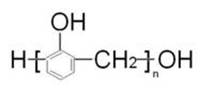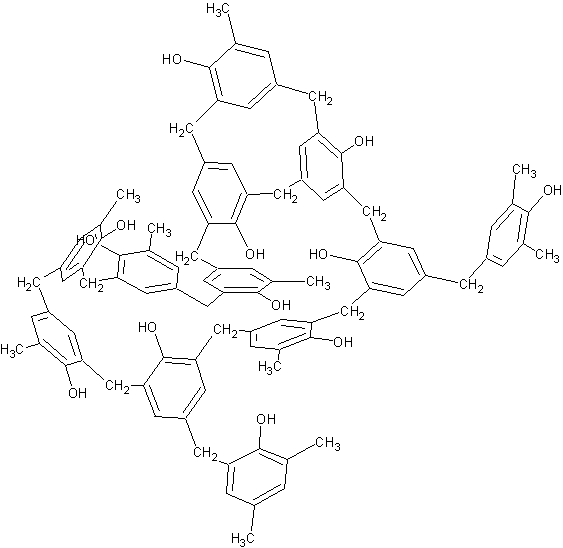Application of phenolic resin in steel drum coating
Application of phenolic resin in steel drum coating
Shanghai Xugong Coating Technology Co., Ltd. Xu Guoxing
Phenolic resin is abbreviated as phenolic resin, which is reddish due to the presence of free molecules and has a specific gravity of 1.25 to 1.30. The formula is:

The phenolic resin is a resin prepared by polycondensation, neutralization, and water washing under the conditions of a catalyst such as phenol, resorcin, m-cresol, xylenol, p-tert-butyl or p-phenylphenol, and formaldehyde or furfural. Among them, a resin synthesized from phenol and formaldehyde is the most important. It is also the world's first synthetic polymer material that is still important today.
The reaction formula is: nC6H5OH + nHCHO → [C6H3OHCH2]n + nH2O
The phenolic resin was first synthesized by the German chemist Adolf von Bayer in 1872. In 1907, the American chemist Leo Hendrik Baekeland, born in Belgium, systematically studied the phenolic resin and its molding process, improved the production technology of phenolic resin, and practically used the resin. industrialization. In 1910, he established General Bakelite and gave the phenolic resin brand name "Bakelite" according to his own name, realizing the industrial production of phenolic resin. In 1911, JW W. Aylesworth proposed the curing of thermoplastic phenolic resin with hexamethylenetetramine, and obtained a good performance plastic product, which has been widely used. In 1969, a fiber made from phenol-formaldehyde resin was developed by the American Emery Company, and then produced by the Japanese company Keno.
The production of phenolic resin has not deteriorated. In 1984, the world's total output was about 1.946 million tons, ranking first in thermosetting resins. China began production in the 1940s, and its output in 1984 was 77,600 tons.
Phenolic resins can be classified into thermosetting (Reslo type) and thermoplastic (Novolak type) depending on the choice of catalyst. It includes: novolak phenolic resin, thermosetting phenolic resin and oil-soluble phenolic resin.
The thermosetting phenolic resin is used for the largest application. Compared with other thermosetting resins, the advantages are as follows: (1) no need to add catalyst or accelerator during curing, only heating and pressurization, adjusting the molar ratio of phenol to aldehyde and the pH of the medium. Values ​​give products with different properties. (2) The density after curing is small, the mechanical strength, the thermal strength is high, the deformation tendency is small, the chemical corrosion resistance and the moisture resistance are high, and it is a high insulating material.
Thermosetting phenolic resin is commonly used in the field of anti-corrosion: phenolic resin coating; phenolic resin glass reinforced plastic, phenolic-epoxy composite glass reinforced plastic; phenolic resin cement, mortar; phenolic resin impregnated, pressed graphite products.
The thermosetting phenolic resin industry can use a non-toxic curing agent NL, or can be cross-linked and cured at room temperature using benzenesulfonyl chloride or petroleum sulfonic acid, but the latter two materials are more toxic and irritating.
The phenolic resin is insoluble in water and soluble in organic solvents such as acetone and alcohol. Phenolic resin has good acid resistance, mechanical properties and heat resistance. It is mainly used in the manufacture of varnishes and corrosion-resistant coatings; in the production of compression-molded powders, laminated plastics; in the manufacture of daily necessities and decorations; in the manufacture of insulation, sound insulation and thermal insulation materials. And widely used in anti-corrosion engineering, adhesives, flame retardant materials, grinding wheel manufacturing and other industries.
Phenolic resins also have the following important properties: 1, high temperature performance
The most important feature of phenolic resins is their high temperature resistance, which maintains their structural integrity and dimensional stability even at very high temperatures. For this reason, phenolic resins have been used in high temperature applications such as refractory materials, friction materials, binders and foundry industries.
2, compatible performance
Phenolic resins are multifunctional and compatible with a wide variety of organic and inorganic fillers. The correct phenolic resin is designed for very fast wetting. And after cross-linking, it can provide the required mechanical strength, heat resistance and electrical properties for abrasive tools, refractory materials, friction materials and bakelite powder.
Water-soluble phenolic resins or alcohol-soluble phenolic resins are used to make coatings as well as impregnated paper, cotton, glass, asbestos and the like to provide them with mechanical strength, electrical properties and the like. Typical examples include electrical and mechanical laminate manufacturing, clutch plates and filter paper for automotive filters.
3, high residual carbon rate
At an inert gas temperature of about 1000 ° C, the phenolic resin produces a high residual carbon, which helps maintain the structural stability of the phenolic resin. This property of phenolic resin is also an important reason why it can be used in the field of refractory materials.
4, low smoke and low toxicity
The phenolic resin system has the advantage of low smoke and low toxicity compared to other resin systems. In the case of combustion, the phenolic resin system produced by scientific formulation will slowly decompose to produce hydrogen, hydrocarbons, water vapor and carbon oxides. The smoke generated during the decomposition process is relatively small and the toxicity is relatively low. These features are in line with today's green products and are suitable for use in sanitary coatings and in areas where public transportation and safety requirements are critical, such as mines, fences and construction.
5, chemical resistance
The crosslinked phenolic resin resists the decomposition of most chemicals. For example, gasoline, petroleum, alcohol, ethylene glycol and various hydrocarbons.
6, heat treatment
Interlinking with other resins can further improve the properties of the resin. Its glass transition temperature is similar to that of crystalline solids and polypropylene. The initial glass transition temperature of the phenolic resin is related to the curing temperature used in the initial curing stage. The heat treatment process can improve the fluidity of the crosslinked resin to promote the reaction, and also remove residual volatile phenol, reduce shrinkage, enhance dimensional stability, hardness and high temperature strength.
Phenolic resins can also be modified to better suit a variety of applications. For example, a polyvinyl acetal modified phenol resin, a polyamide modified phenol resin, an epoxy modified phenol resin, a silicone modified phenol resin, a boron modified phenol resin, a xylene modified phenol resin, or the like can be obtained.
The rosin-modified phenolic resin, butanol etherified phenolic resin, p-tert-butyl phenolic resin and p-phenylphenolic resin have good miscibility with tung oil and linseed oil, and are important raw materials for the coating industry.
X-362 coating is a special inner coating of steel drum made of specially modified phenolic resin. Compared with the general phenolic resin coating, the modified resin has greatly improved the adhesion of the steel drum plate, the bending resistance of the coating, and the storage period of the coating. The methylol group which is active on the benzene ring at a high temperature can be crosslinked with excess formaldehyde in the resin to form a dense stable coating having a network structure. Therefore, it is mildewproof, anticorrosive, moisture resistant, oil resistant, solvent resistant, salt spray resistant, chemical resistant, and can withstand any concentration of hydrochloric acid and various organic acids and pesticides, surfactants and other items. Moreover, after high temperature crosslinking, the methylene bond in the phenolic resin has considerable stability, so its heat resistance is superior to that of epoxy resin and unsaturated polyester resin, and can be used even at 120 ° C for a long time. Its structure is as follows:

It can be seen from the molecular structure that it has a large number of benzene rings, and the benzene ring can undergo nitrification and sulfonation reactions, so it is not resistant to strong oxidizing acids such as concentrated sulfuric acid and nitric acid. In addition, due to the presence of a phenolic group in the structure, the hydroxyl group on the benzene ring is weakly acidic, and its hydrogen can be substituted by sodium to form a water-soluble sodium phenolate product, so that the alkali resistance is also poor, and it is not resistant to molten phenols. product.
In the general thermosetting phenolic resin coating, since the cured crosslinked main body is all benzene ring structure, the coating film is very brittle, and the slightly curved coating immediately breaks, and the shelf life is only about three months at about 20 °C. However, the X-362 coating is specially designed for steel drums and is made of a special internal steel coating for the improvement of the thermosetting phenolic resin. Therefore, the bending and the steel drum of the steel drum when the bottom cover is rolled up are taken into consideration. The adhesion and leveling of the board has greatly extended its shelf life.
X-362 coating coating performance is excellent, and the spraying unit consumption is also low. Each kilogram of X-362 steel drum can spray more than 8 200 liter steel drums, plus the price has a big advantage, so It has been widely used in steel drum inner coatings.
Just as X-622 coating has been replaced by some foreign barrel factories and 2088 coatings and internationally renowned brand RDL-44 coatings, X-362 coatings have also been used by Russian barrel factories to replace internationally renowned brands RDL-50 coatings. Bucket manufacturers have successfully replaced this coating with high-priced imported coatings and PVF coatings.
However, the coating of X-362 steel drum should pay attention to the construction: the spray viscosity should be lower, preferably in about 12 seconds (coating - 4 cups, 25 ° C), the coating should be thinner, otherwise it is easy to bake. Causes the coating to foam. The curing conditions of the standard oven were 190 ° C for 45 minutes, and the reference baking conditions were 220 ° C for 15 minutes. Specifically, the optimum baking temperature and baking time can be determined according to different baking equipments after the test.
Related Links:
Application of polyurethane resin in steel drum inner and outer coating
Application of epoxy resin on steel inner and outer coating
We offer a wide choice of different types of Patio furniture collections, which cover garden rattan sofa, outdoor dining set, chat set, rattan bar set. With splendid style and smooth line, every details and quality is presently perfectly. Excellent surface treatment process and the selection of products for climate and UV have long-term protection ability, getting more than your money`s worth.

Patio Furniture Sets,Outdoor Patio Furniture,Patio Chairs,Garden Table And Chairs
SEVENZE INDUSTRAL CO.,LIMITED , http://www.sevenze.com